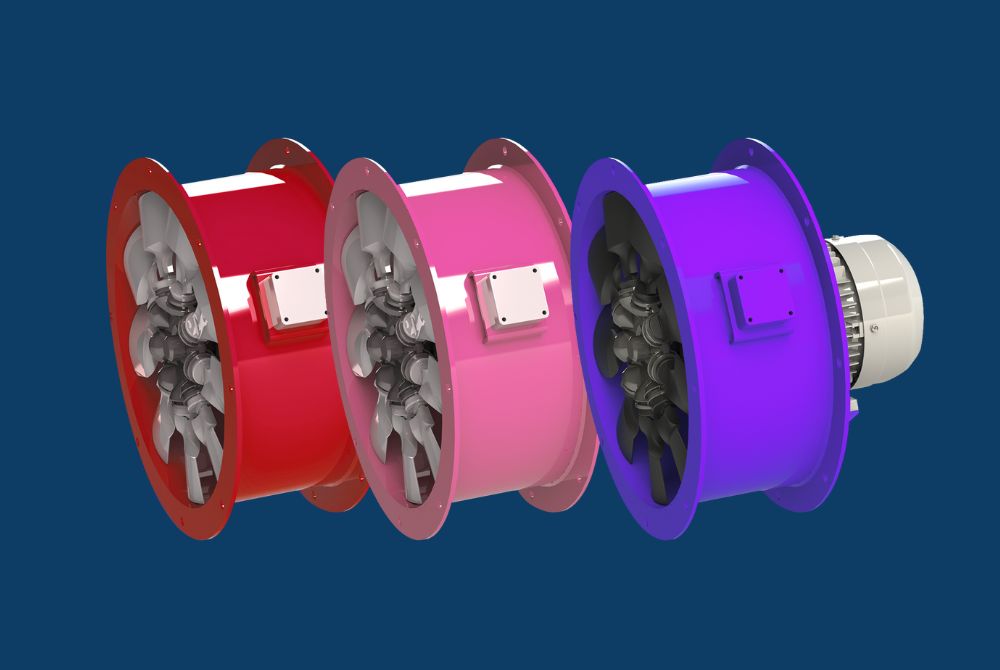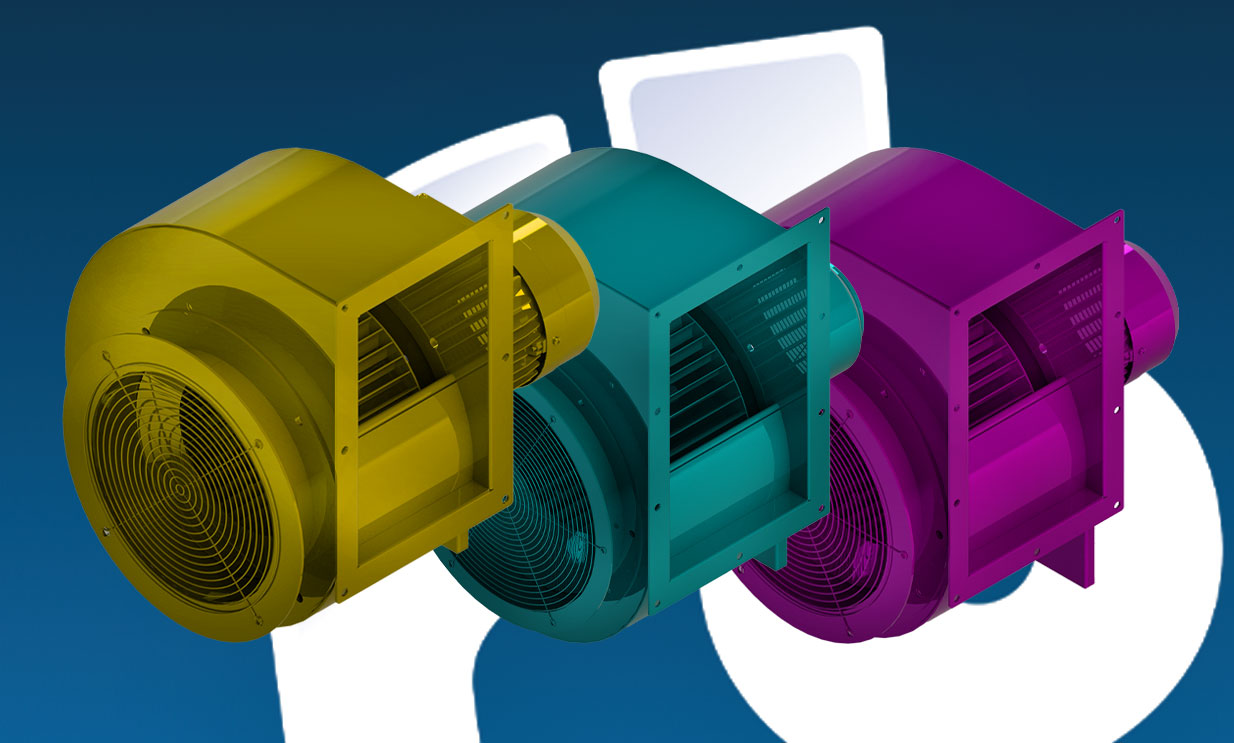
News
What is ATEX? ATEX Equipment and Explosive Atmospheres
18.03.2025
Introduction to ATEX
ATEX refers to two European directives designed to regulate safety in explosive atmospheres. These regulations aim to protect workers and ensure that equipment used in such environments is safe and compliant. Explosive atmospheres can result from flammable gases, vapours, mists, or combustible dust, posing severe risks if not properly managed.
Understanding Explosive Atmospheres
An explosive atmosphere is a mixture of dangerous substances with air under atmospheric conditions (typically -20°C to 40°C and pressures of 0.8 to 1.1 bar). When ignition occurs, combustion spreads rapidly, leading to explosions that can cause significant damage and loss of life.
ATEX Directives Explained
ATEX is governed by two key directives:
1. Directive 99/92/EC (ATEX 137 - Workplace Directive)
- Focuses on improving the health and safety of workers in explosive atmospheres.
- Requires employers to classify hazardous areas and take preventive measures.
- Implemented in Great Britain through the Dangerous Substances and Explosive Atmospheres Regulations (DSEAR).
2. Directive 2014/34/EU (ATEX 114 - Equipment Directive)
- Regulates equipment and protective systems used in potentially explosive atmospheres.
- Ensures free trade of ATEX-certified equipment within the EU.
- Implemented in Great Britain through the 2016 EPS Regulations.
What is an ATEX Zone?
Workplaces must classify hazardous areas into ATEX zones based on the likelihood and duration of an explosive atmosphere. The zoning system helps determine what type of equipment should be used.
For Gases, Vapors, and Mists:
- Zone 0: Explosive atmosphere is present continuously or for long periods.
- Zone 1: An explosive atmosphere is likely during normal operations.
- Zone 2: Explosive atmosphere is unlikely or only for short durations.
For Dusts:
- Zone 20: Explosive dust atmosphere is present continuously or for long periods.
- Zone 21: Explosive dust atmosphere is likely during normal operations.
- Zone 22: Explosive dust atmosphere is unlikely or only for short durations.
What is an ATEX Rating?
ATEX ratings indicate the suitability of equipment for use in specific explosive atmospheres. Equipment must comply with stringent safety standards and bear the ATEX marking, which includes:
- The EX symbol (denoting ATEX certification)
- Equipment Group and category (e.g., II 2G for gas environments)
- The temperature class and protection method (e.g., T4, Ex d for flameproof enclosures)
What is ATEX Certification?
Manufacturers of ATEX equipment must ensure compliance with safety regulations. Certification involves:
- Risk assessments and conformity checks.
- Testing by an independent Notified Body (for higher-risk environments).
- Proper labelling with ATEX identification.
- Documentation and guidelines for safe operation.
Ensuring Workplace Safety in Explosive Atmospheres
To mitigate risks, employers must:
- Identify and classify hazardous areas.
- Use ATEX-certified equipment in zoned areas.
- Provide appropriate anti-static clothing for workers.
- Conduct risk assessments and explosion safety verification.
ATEX is crucial
Understanding ATEX is crucial for ensuring safety in industries dealing with flammable substances. By following ATEX regulations, businesses can protect their workforce, comply with legal requirements, and reduce the risk of catastrophic explosions. Ensuring the use of ATEX-rated equipment and adhering to safety protocols can make workplaces significantly safer and more efficient.
Return To News
Keep up to date with our
Latest News
-
Fans & Blowers Acquires B.O.B. Stevenson | Announcement
View more -
How Is the Centrifugal Blower Turned? Drive Types Explained
View more -
Types of Centrifugal Fans Explained | Industrial Fan Guide
View more -
Industrial Cooling Fans: How they work, Uses and Benefits
View more -
What is a Rotating Shaft on a fan? Applications and Benefits
View more -
Quiet Axial Fans | Low-Noise Industrial Fans with Silencers
View more -
Inlet & Outlet Fan Design | Improve Airflow and Efficiency
View more -
Expert Air Control Solution | Fans Built for Controlling Air
View more -
Fan Motors for Industrial Fans | Direct & Belt Drive Options
View more -
Fan Housing (Volute) Explained | Centrifugal Fan Efficiency
View more -
Fan Impeller Guide | Centrifugal Fan Impeller & Manufacturer
View more -
Compressed Air Safety with Industrial Fans and Blowers
View more -
How Does a Centrifugal Fan Work? | Guide Explained Simply
View more -
What Are Axial Flow Fans? | Industrial Ventilation Explained
View more -
Are Centrifugal Fans Quieter? | Noise Comparison & Benefits
View more -
What Are Centrifugal Fans? | Industrial Fans & Blowers Guide
View more -
What is HVAC? Understanding what HVAC stands for
View more -
How Does an Axial Fan Work? | Learn About Their Functions
View more -
What is ATEX? ATEX Equipment and Explosive Atmospheres
View more -
New Job Vacancy: Welder/Fabricator – Join Our F&B Team!
View more -
Fans and Blowers partner with FBG Servicing for expert industrial fan servicing
View more -
Celebrating National Engineers Week at Fans and Blowers
View more -
Fans & Blowers Introduce Side Channel Blowers to the roster!
View more -
Josh Roddick joins the team as F&B Production Manager!
View more -
A Christmas Message from All of Us at Fans and Blowers
View more -
Fans and Blowers Achieves Recertification ISO 14001 ISO 9001
View more -
Fans and Blowers for Air Knife Systems: Powerful Solutions
View more -
Everything You Need to Know About Axial HVAC Fans
View more -
Silencers for Fans: Reduce your Industrial Noise Levels
View more -
Inlet Filters: Maintain Clean Airflow and Protect Equipment
View more -
New Fans and Blowers Shop Now Live
View more -
Meet Fans and Blowers’ New Apprentice: Finley Huggins!
View more -
ATEX Explosion Proof Fan: Safety in Hazardous Environments
View more -
Discover Our Latest Product: Multivane Forward Curved Fans
View more -
How to Make an Industrial Fan Quiet: Tips and Techniques
View more -
What’s the Difference Between a Radial Fan vs Axial fan
View more -
Learning the importance of Fans & Blowers Industrial Blowers
View more -
Unlocking Reliability and Effectiveness with Bifurcated Fans
View more -
Ensuring Efficiency: The Value of Dust & Fume Extraction
View more -
Exploring the Functions of Gas Booster and Exhauster Fans
View more -
Unleashing the Potential of Axial Fans: Endless Applications
View more -
What are Axial Fans used for?
View more -
Our Fume Extract Fans are Clearing the Air of Hazardous Fumes
View more -
Unveiling ATEX Fans’ Vital Role in Hazardous Environments
View more -
How much electricity does an industrial fan use?
View more -
What is a Centrifugal Blower?
View more -
What is an Axial Fan?
View more -
What is a Centrifugal Fan used for?
View more -
New Vacancy: Welder/Fabricator
View more -
Axial Fans vs Centrifugal Fans
View more -
The advantages of Axial Fans
View more -
Industries that our industrial Fans and Blowers excel in
View more -
Celebrating 50 years of manufacturing
View more -
Introducing a world leading axial fan range
View more -
Centrifugal specialists
View more -
Laser cutting services
View more -
New digital media for 2022
View more -
On-site service and maintenance
View more -
On-site nitrogen production plant
View more -
Meet our new engineering Graduate
View more -
New factory signage
View more -
A fresh new look for our website
View more -
Duncan Celebrates 25 Years at Fans and Blowers
View more -
Weatherproof Acoustic Enclosure to meet noise restrictions
View more -
Fresh Look for the Flat Bed
View more -
BSZ Fans On Their Way To Europe
View more
PRODUCTS WITH EXCEPTIONAL PERFORMANCE
Our Range


Shop Fans
Shop our range of Multi-Vane FansWorldwide shipping
International standards
High performance


